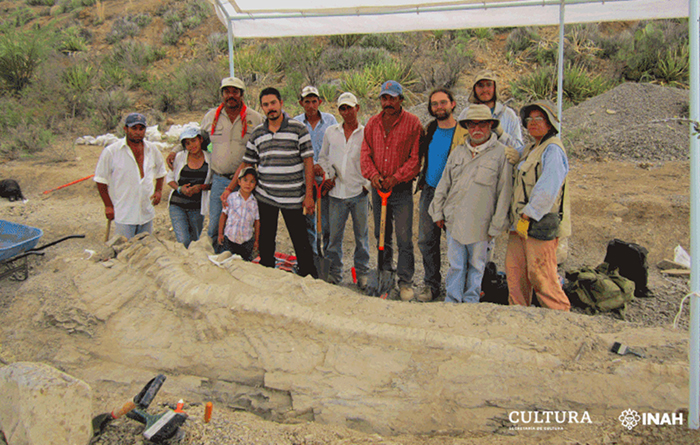Tlatolophus galorum: New Species of Duck-Billed Dinosaur Unearthed in Mexico

Paleontologists have identified a new species of lambeosaurine hadrosaur from fossils found in northern Mexico.
The new dinosaur roamed our planet during the Campanian age of the Late Cretaceous period, 72-73 million years ago.
It belongs to Parasaurolophini, a tribe of hadrosaurs with elaborate bony head crests in the subfamily Lambeosaurinae.
Scientifically named Tlatolophus galorum, it grew to between 8 and 12 m (26-39 feet) long.
Its bony hollow crest was about 1.3 m (4.3 feet) in length and was likely red in color.
“We know that Tlatolophus galorum had ears with the ability to receive low-frequency sounds, so they must have been peaceful but talkative dinosaurs,” said Dr. Ángel Ramírez-Velasco, a paleontologist in the Instituto de Geología at the Universidad Nacional Autónoma de México.
“Some paleontologists theorize that they emitted loud sounds to scare off carnivores or for reproduction purposes, which suggests that their crest was possibly brightly colored.”

The fossilized remains of Tlatolophus galorum were recovered in the 2000s from the Cerro del Pueblo Formation near Presa de San Antonio, Coahuila, Mexico.
Currently, it is the most complete lambeosaurine hadrosaur so far found in this country.
“This fossil, which is still under investigation, is an exceptional case in Mexican paleontology, because highly favorable events had to occur millions of years ago, when Coahuila was a tropical region, for it to be preserved in the conditions under which we find it,” said Dr. Felisa Aguilar, a paleontologist at the Centro INAH Coahuila.
The team’s paper was published online in the journal Cretaceous Research.
_____
Ángel A. Ramírez-Velasco et al. Tlatolophus galorum, gen. et sp. nov., a parasaurolophini dinosaur from the upper Campanian of the Cerro del Pueblo Formation, Coahuila, northern Mexico. Cretaceous Research, published online May 11, 2021; doi: 10.1016/j.cretres.2021.104884
Source: www.sci-news.com/








